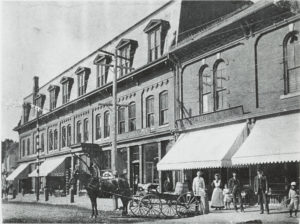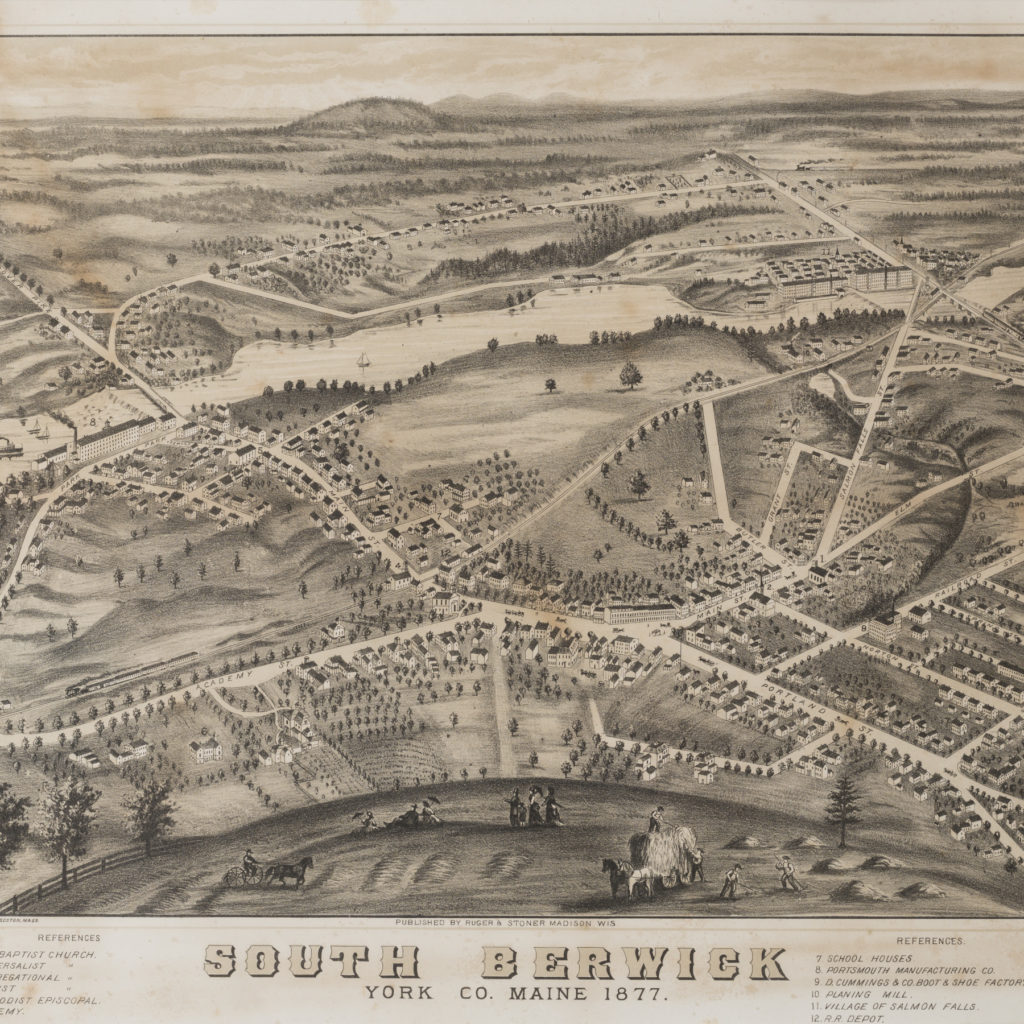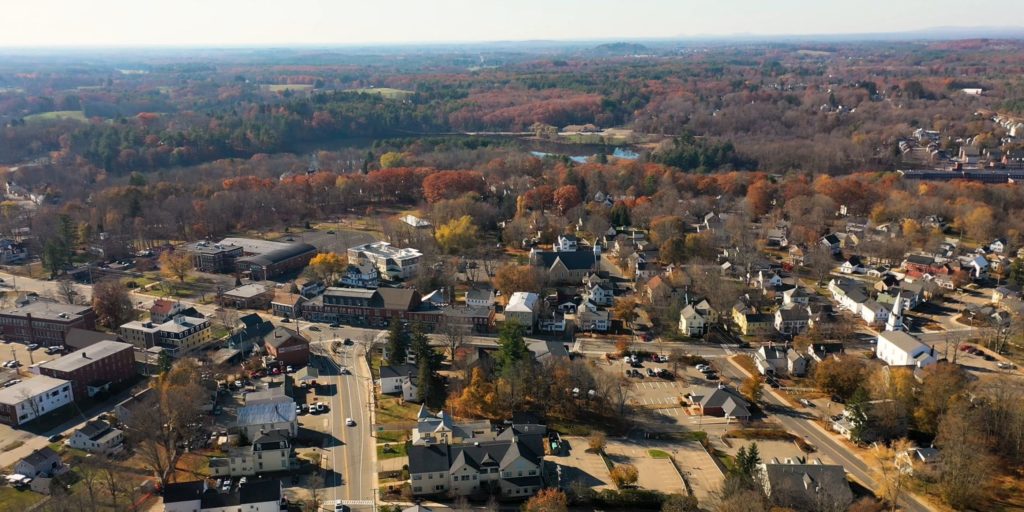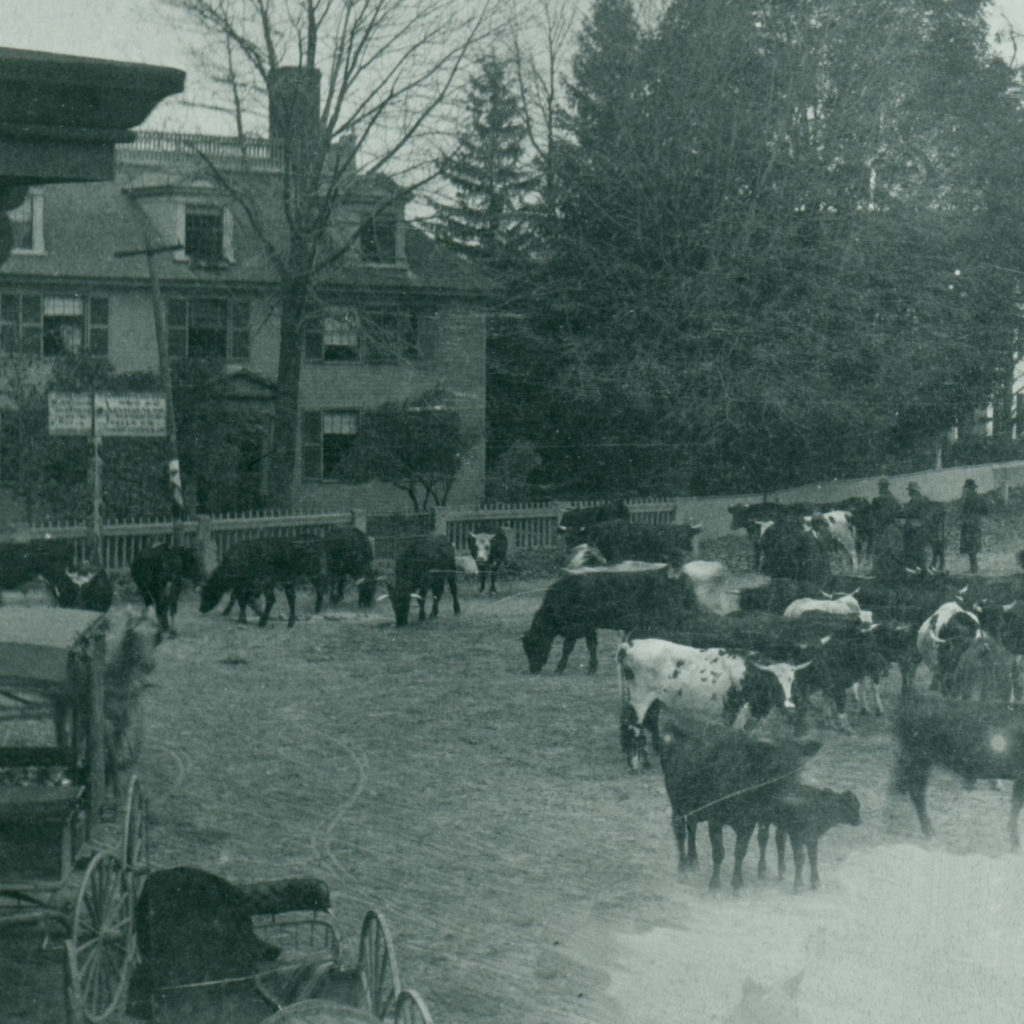 Sarah Orne Jewett House
Sarah Orne Jewett House
Sarah's Town
 “The quiet village life, the dull routine of farming or mill life, early became interesting to me. I was taught to find everything that an imaginative child could ask, in the simple scenes close at hand.”
“The quiet village life, the dull routine of farming or mill life, early became interesting to me. I was taught to find everything that an imaginative child could ask, in the simple scenes close at hand.”
Sarah Orne Jewett (“Looking Back on Girlhood,” 1892)
“When one really knows a village like this and its surroundings, it is like becoming acquainted with a single person.”
Sarah Orne Jewett (The Country of the Pointed Firs, 1896)
Sarah Orne Jewett drew inspiration from the people and places she knew. As a child she watched people in the town square from her yard; as a successful author, from her desk by the window overlooking the same.
South Berwick 1877
Sarah’s Neighborhood
This bird’s eye view map of South Berwick Maine, 1877, depicts the town as it was when Sarah Orne Jewett was 28 years old.
Road to Berwick Academy
Founded in 1791, Berwick Academy began as a private school and was held in high esteem when Sarah Orne Jewett and her sister Mary Rice Jewett graduated from the school, and before them, Sarah’s father, Dr. Theodore Jewett.
From about 1886-1960, Berwick Academy functioned as South Berwick’s public high school. Sarah’s nephew, Dr. Theodore Jewett Eastman, graduated from Berwick Academy before going on to his medical career.
Oddfellows Block
Oddfellows was an altruistic fraternal society chartered in 1845. Sarah Orne Jewett’s father, Dr. Theodore Jewett was a founding member.
Oddfellows block, a long brick structure, was built to house the Oddfellows meeting hall on the third floor, with commercial space on the lower floors. The commercial spaces were rented used by various enterprises, including an insurance office, fish market, cabinet maker, and marble works. Sarah Orne Jewett’s uncle William ran the Jewett store here during the 1870’s.
The Oddfellows chapter is no longer extant, but the building remains a vital part of downtown South Berwick, housing local businesses.
To York Harbor
Sarah Orne Jewett would have taken this road to visit elderly sisters Mary Barrell (c.1804-1889) and Elizabeth Barrell (c. 1799 -1883), descendants of wealthy Loyalist (and enslaver) Jonathan Sayward.
As much as Sarah found the lively society of Boston artists invigorating, she enjoyed her friendships with local people, particularly those of the older generation. She visited Mary Barrell in the last year of Barrell’s life. Jewett recalled one of those visits: “She took hold of me with her poor old bird's claw of a hand and kissed and kissed me and tried to talk -- her eyes were full of life and of love as if I had found her in the prison of her body and would understand.” MS Am 1743 (255), Houghton Library, Harvard University. Transcription by Terry Heller, Coe College.
Main Street Business Block
In Sarah’s day, this block of commercial buildings held a druggist, stationer, tailor, grocer, jewelry store, millinery, shoe store, and fancy goods—gifts and notions.
Today, the block continues to be vital, housing local businesses and retail.
Miss Raynes School
Olive Raynes (1833-1923) was Sarah Orne Jewett’s schoolteacher. Born in South Berwick, she began teaching after graduating from Berwick Academy.
She first taught, with her sister’s help, in the parlor of her family home. When the school outgrew the parlor, she moved to her father’s shoe store down the street, across from the Jewett home. Later, she built an addition onto her home for use as the school.
According to a 1914 article in the Lewiston Journal, “Her discipline was strict and she was never satisfied with poor attainment but exacted from each pupil the best of which he was capable…. The Sunday school lesson was always taught as much as any other lesson, and tired mothers always felt sure their children would be prepared for Sunday as long as they went to Miss Raynes.”
To Portland Street Cemetery
Located a mile from Sarah Orne Jewett House, Portland Street Cemetery contains the graves of several members of the Jewett family: Sarah Orne Jewett; her sisters Mary and Caroline; Caroline’s husband Edwin Eastman and son (Sarah’s nephew), Dr. Theodore Jewett Eastman; Sarah’s parents, Dr. Theodore H. Jewett and Caroline Perry Jewett; Sarah’s grandfather Captain Theodore F. Jewett and the four women who were his wives: Sarah Orne Jewett, Olive Jewett, Mary Rice Jewett, and Eliza Sleeper Jewett; Sarah’s uncle William Jewett and wife Augusta Jewett; Sarah's uncle Samuel Jewett, who died at an early age aboard the maiden voyage of the Berwick, a ship owned by his father.
Jewett Family Home, built c. 1774-1780
to learn more
South Berwick 2020
A Modern Bird's Eye ViewCows Downtown
This photograph shows a very different kind of traffic crowding South Berwick’s Portland and Main Streets in front of Jewett’s house.
Dairy farming was an important industry in nineteenth century Maine. While produce farms were hurt by the advent of the railroad and ensuing competition from the Midwest, railroad transport helped Maine dairy farms with refrigerated cars, so farmers could send products farther than had previously been possible.


